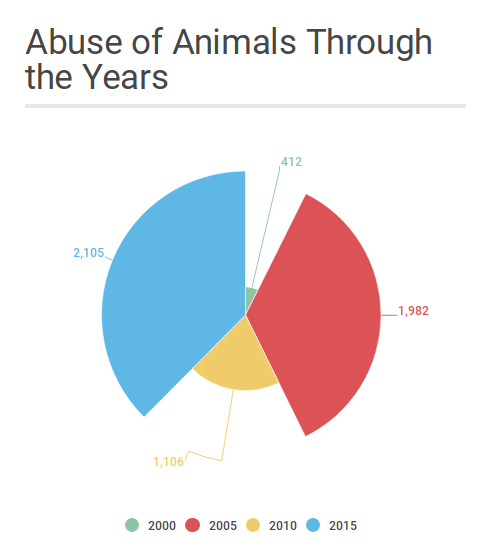Animal cruelty remains a pervasive issue across the globe, prompting significant societal outrage and catalyzing legal reforms. Understanding the long and complex history of animal rights legislation provides insight into how far we’ve come and the ongoing challenges we face. This exploration highlights the evolution of legal frameworks aimed at protecting animals and examines critical milestones that have shaped contemporary views on animal welfare.
The legal history of animal rights can be traced back to ancient civilizations, where certain laws and norms indicated a rudimentary understanding of animal welfare. In Mesopotamia, for instance, the Code of Hammurabi (circa 1754 BC) contained stipulations concerning the treatment of domestic animals. This ancient code is often recognized as one of the earliest examples of animal protection legislation, indicating a societal recognition of animals as beings deserving of care and respect.
Fast forward to medieval Europe, and we find that the Church played a significant role in advocating for the humane treatment of animals. During this period, a spiritual perspective on animal welfare emerged, intertwining moral and ethical considerations. The belief that animals, as creations of God, should be treated with compassion laid the groundwork for future legal reforms. However, actual enforcement was sporadic and largely depended on local customs and attitudes towards animals.
The 17th and 18th centuries marked a turning point with the advent of the Enlightenment, which emphasized reason and individual rights. Philosophers such as Jeremy Bentham dramatically altered the discourse surrounding animal welfare by introducing the idea of sentience—the capacity to suffer and experience pleasure. Bentham’s seminal argument: “The question is not, Can they reason? nor, Can they talk? but, Can they suffer?” underscored the moral obligation to consider animal welfare within the framework of law, signaling a shift from mere philosophical speculation to actionable legal advocacy.
In the 19th century, the incipient modern animal rights movement gained momentum. One of the most notable landmarks was the formation of the Society for the Prevention of Cruelty to Animals (SPCA) in the United Kingdom in 1824—the first of its kind in the world. This organization was pivotal in establishing standards for the humane treatment of animals and spurred the creation of similar organizations globally. The increasing visibility of animal cruelty, exemplified by brutal practices such as bear-baiting and dog-fighting, galvanized public sentiment and contributed to significant legal reforms.
As the movement grew, various legislative measures were enacted to safeguard animals. The Cruelty to Animals Act of 1835 in the UK outlawed certain acts of cruelty, while broader animal welfare laws began to emerge in other countries, including the United States. By the late 19th century, many states had adopted their own anti-cruelty statutes, establishing a legal foundation for the protection of animals.
Entering the 20th century, several key developments further advanced animal rights legislation. The introduction of the Animal Welfare Act (AWA) in the United States in 1966 was revolutionary, particularly in its focus on the care and treatment of animals used in research, exhibition, and commerce. This act, which has undergone numerous amendments over the years, was a significant step toward institutionalizing animal rights within federal law. It is essential to recognize, however, that the AWA excludes many animals, particularly those in agricultural settings, thereby illuminating the ongoing gaps and complexities within animal rights legislation.
Throughout the latter half of the 20th century and into the 21st, societal attitudes towards animals have continued to evolve. The rise of activism, advocacy groups, and widespread public education campaigns has increasingly pressed lawmakers to take animal welfare seriously. A growing recognition of animal sentience, coupled with scientific advancements that elucidate the emotional and cognitive capabilities of various species, has fostered a more compassionate and comprehensive approach to animal rights.
Today, many countries have established extensive legal frameworks aimed at prohibiting animal cruelty and promoting welfare standards. Countries like Germany and Switzerland have enshrined animal rights in their constitutions, highlighting a noteworthy progress compared to jurisdictions where animal welfare laws remain underdeveloped. Furthermore, international initiatives, such as the Universal Declaration on Animal Welfare proposed at the UN, signify a collective recognition of the necessity for global animal rights protections.
Despite these advancements, challenges persist. The enforcement of animal welfare laws remains inconsistent, and many animals, particularly those in factory farms or laboratories, continue to suffer abominable conditions. Moreover, cultural attitudes toward animals vary widely worldwide, complicating the implementation of uniform legal standards. Activism remains crucial in addressing these disparities and ensuring that the legal framework for animal rights is comprehensive and enforced.
In retrospect, the legal history of animal rights illuminates a trajectory from ancient customs to modern legislation. While considerable progress has been made, the journey is far from complete. The fight against animal cruelty is ongoing, necessitating a committed and informed society to uphold the dignity and rights of all animals. As the legal landscape continues to evolve, it remains paramount to advocate for humane treatment and to champion laws that reflect the intrinsic value of animal life.
In conclusion, the question of how long animal cruelty has been illegal is historical yet contemporary, underscoring a persistent struggle for justice. Through an understanding of this trajectory, individuals can be more equipped to advocate for policies that protect and celebrate animals, fostering a world in which their rights are respected and upheld.








